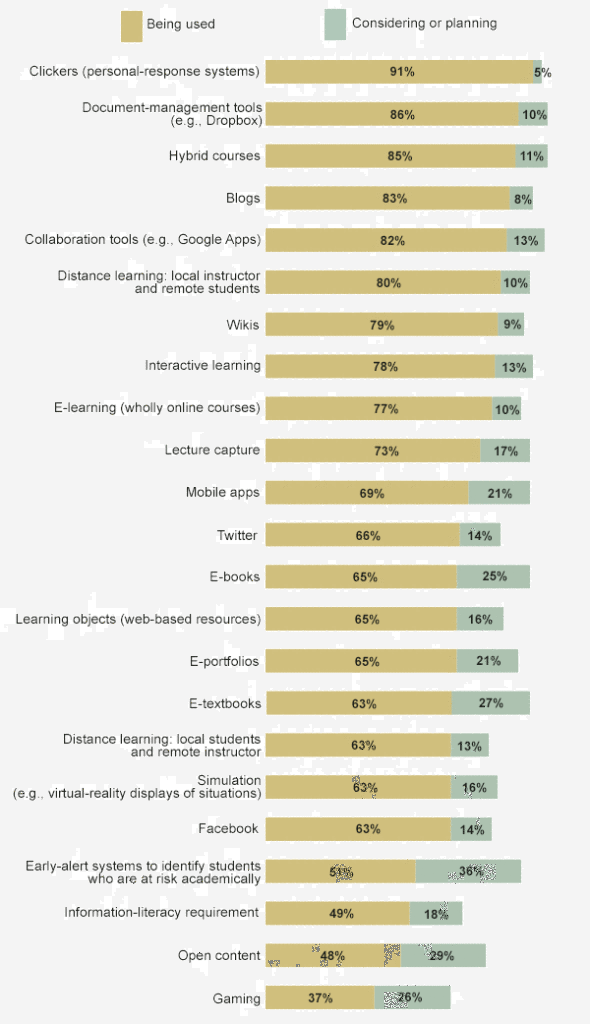Recently I wrote a post about many ed tech products being stuck in pilots without large-scale adoption.
In our consulting work Michael and I often help survey institutions to discover what technologies are being used within courses, and typically the only technologies that are used by a majority of faculty members or in a majority of courses are the following:
- AV presentation in the classroom;
- PowerPoint usage in the classroom (obviously connected with the projectors);
- Learning Management Systems (LMS);
- Digital content at lower level than a full textbook (through open Internet, library, publishers, other faculty, or OER); and
- File sharing applications. [snip]
This stuck process ends up as an ed tech purgatory – with promises and potential of the heaven of full institutional adoption with meaningful results to follow, but also with the peril of either never getting out of purgatory or outright rejection over time.
With the Chronicle’s Almanac coming out this week, there is an interesting chart that on the surface might contradict the above information, showing ~20 technologies with above 50% adoption.

Source: Educause Center for Analysis and Research [ECAR]
There are plenty of technologies being piloted but few hitting the mainstream, and adoption within an institution is one of the key indicators to watch.
There is one “technology” in which much of this is imbedded and that is the seat-time/credit-based degree often situated within or originating from or through a physical campus (in whole or in part). The variance is the on-line programs, most of which map brick space into click space.
In other words, most of these, to paraphrase a Christensen model, are like adding tail fins to US cars in response to the emergent alternatives. It still focuses on content delivery/mastery at a point in time when, as MOOC’s have shown, cost of content is asymptotically approaching zero as it can be extracted as needed.
The question is whether these are the equivalent of analog media systems in an emergent and increasingly digital world.